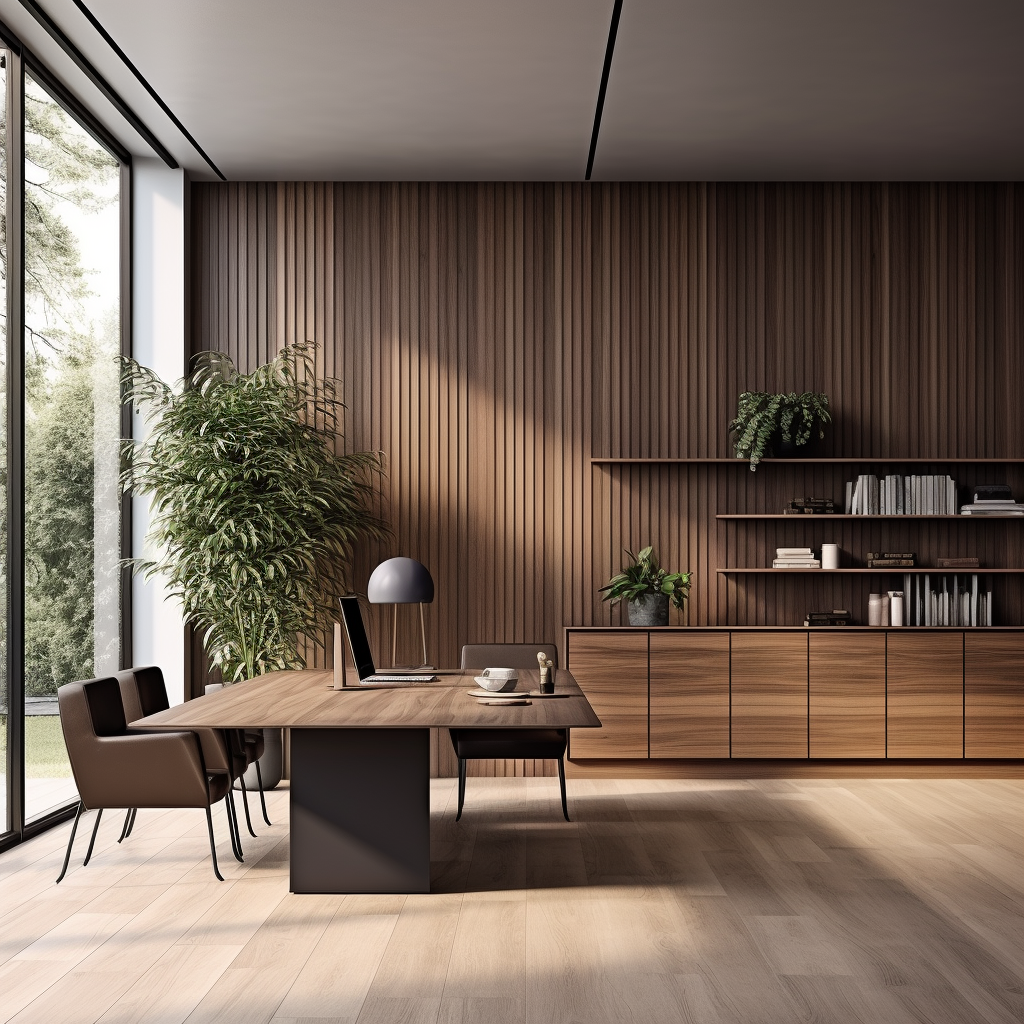Transforming a Fixer-Upper: Essential Guide to Spotting and Revamping a Kiwi Do-Up Gem
Introduction: The Lure of a Do-Up Project
The quintessential Kiwi dream often involves rolling up one's sleeves and turning a run-down abode into a charming home. This vision of transforming a fixer-upper, or what locals fondly call a 'do-up', captures the imagination of many New Zealanders. The journey towards revamping such a property is both challenging and rewarding, teeming with potential for personalisation and value addition.
The Kiwi Dream of Transforming a House
For many in Aotearoa, the idea of taking on a do-up project is more than just an investment; it's an adventure that leads to creating a bespoke living space that tells their unique story. It's about taking something that's seen better days and breathing new life into it, crafting a home that reflects one's style and needs.
A Real Example of A Before, During and After of A Do-Up Property in Auckland
This property was purchased in a below average state in terms of aesthetic in 2014 as the location of Western Onehunga, and the "bones" of the property were very good compared to the price that it was listed at. The overall renovation took two phases which was initial cleanup post purchase which was two weeks of cleaning, replacing ceilings and repainting, and the second phase was a full repaint and restyle before sale in 2020.
Embarking on this journey requires more than just vision—it demands careful planning, understanding of what to look for, and knowing how to assess the potential of a property.
Assessing the Potential: What to Look For
Location, Location, Location: The Key to Long-Term Value
A timeless adage in real estate is the resounding emphasis on location. It's not just about where your prospective 'do-up' is situated today, but how the area is expected to evolve in the future. For your renovation project to be truly worthwhile and financially sound, it should ideally be nestled in an area that guarantees its long-term value.
"When evaluating the potential of a do-up property, you should give due consideration to its proximity to key amenities. This is significant as it not only adds to the convenience factor but also contributes immensely to the property's real and perceived value. Here are some of the primary amenities you should consider:
- Local supermarkets or shopping centres: Having a shopping centre or supermarket nearby is a huge plus. It means that residents will have quick and easy access to groceries and other essential items, saving them time and effort, especially after a long day at work.
- Healthcare facilities: Close proximity to medical facilities can be a critical deciding factor for many, especially for families with young children or elderly members. Being within easy reach of doctors, hospitals or clinics provides peace of mind and can be a significant advantage in emergencies.
- Recreational areas like parks or beaches: Recreational areas contribute significantly to quality of life. A home near a park or beach offers an escape from the urban hustle-bustle and provides opportunities for outdoor activities, relaxation, and social interaction. This is particularly appealing in New Zealand, known for its stunning landscapes and natural beauty.
Key Schools, Community Hubs, and Sporting Areas
When considering the desirability of a location, it's crucial to assess the proximity to key schools, community hubs, and sporting areas. These aspects can significantly enhance the appeal of a property, making it stand out in the competitive New Zealand real estate market.
- Proximity to Key Schools: Whether it's primary schools, secondary schools, or tertiary institutions, having these educational establishments close by is hugely beneficial. This point is particularly true for families with school-going children or those planning to start a family. A short commute to school not only saves time but also provides peace of mind for parents, knowing their child doesn't have to travel far. Additionally, schools often have a strong community focus, providing opportunities for social interaction and community engagement.
- Access to Community Hubs: Community hubs are central points where people gather for various activities ranging from social engagements to cultural events. These might include community centres, libraries, local markets, and cultural venues. Easy access to these places helps foster a sense of belonging and community spirit among residents. It also provides opportunities for leisure and enrichment that contribute positively to lifestyle quality.
- Nearby Sporting Areas: For many Kiwis, sport is an integral part of life. Living close to sporting facilities such as gyms, swimming pools, stadiums or even local sports clubs can be a substantial advantage. It facilitates an active lifestyle and offers possibilities for social interaction and community involvement. Whether you're an avid rugby fan wanting easy access to live games or someone who enjoys a morning run in the local park, proximity to sporting areas can add significant value to your home's appeal.
- These factors underscore the importance of location in property selection – whether you're purchasing your first home or looking for an investment property. Remember that a desirable location extends beyond just physical attractiveness – it includes convenient access to essential amenities that collectively enhance lifestyle quality.
- Remember, the more attractive and convenient the location, the higher its desirability quotient will be.
Moreover, accessibility to good schools can significantly impact a property's appeal, especially for young families. Similarly, having efficient public transport links nearby can add to the convenience factor and increase desirability.
And let's not forget about those stunning views! In New Zealand, properties with picturesque vistas of our beautiful natural landscapes often fetch higher prices. So if you're lucky enough to find a 'do-up' with a view or two—be it rolling hills, tranquil waters, or vibrant cityscapes—that's a bonus worth investing in.
Structural Soundness: Knowing What’s Fixable
Before you get swept off your feet by a property's potential charm, make sure its structural integrity isn't compromised. Look out for red flags like foundational cracks, dampness, or rot—issues that could transform your dream renovation into an unending financial drain.
Remember the importance of getting the house thoroughly inspected by professionals before making any commitments. An expert building inspector can identify potential problems and provide you with a comprehensive report outlining their severity and repair costs. This step is crucial as it can save you from unexpected expenses down the line and ensure your 'do-up' project doesn't turn into a nightmare.
Layout and Flow: Identifying Possibilities for Improvement
When considering a do-up property, don't just look at what's there—imagine what could be. How might you alter the current layout to enhance flow, functionality, and aesthetic appeal?
Open-plan living spaces are a popular trend in modern Kiwi homes. They create an inviting atmosphere that encourages social interaction and allows natural light to permeate throughout the home. Could this design concept be achieved in your potential 'do-up'?
Think about removing non-structural walls to open up cramped spaces or rearranging rooms to align with your lifestyle needs. However, always consult with a professional architect or builder before making any major structural changes.
A successful 'do-up' project requires not just vision but also careful planning and due diligence. By focusing on location, structural soundness, and layout possibilities, you're one step closer to transforming a house into your dream home.
Budgeting for Your Do-Up
Estimating Renovation Costs: A Detailed Approach
When embarking on a renovation project, it's crucial to have a clear understanding of the potential costs involved. If not appropriately budgeted, renovations can become considerably more expensive than initially planned, potentially leading to financial strain.
To avoid any unpleasant surprises:
- Get detailed quotes: Contact experienced contractors and ask for detailed quotes. Be clear about your vision and expectations so they can provide accurate pricing. Each quote should break down the cost of labour, materials, and any additional expenses.
- Factor in every aspect: Include every aspect of the renovation in your budget—from major structural changes to the smallest details such as fixtures and finishes. This will help you understand the full scope of the project and prevent unexpected costs from cropping up later.
Allocating Funds Wisely: Prioritise for Maximum Value
Once you have a comprehensive understanding of the overall costs, it's time to allocate your funds wisely.
- Focus on value-adding areas: Kitchens and bathrooms often offer the best return on investment. A well-designed kitchen or bathroom can significantly increase the appeal and value of your property.
- Don't overlook structural repairs: While cosmetic upgrades can enhance aesthetics, don't neglect essential structural repairs. Ensuring a sound structure is critical for the longevity of your home—it's an investment in its future.
Hidden Costs: Preparing for the Unexpected
Even with meticulous planning and budgeting, unexpected expenses are almost a certainty in renovation projects—unforeseen issues often arise once work begins.
To safeguard against this:
- Set aside a contingency fund: A general rule of thumb is to reserve 10-20% of your total budget for unexpected costs. This safety net will give you peace of mind knowing you're prepared for any surprises that may come your way during the renovation process.
You now have a solid foundation for creating a well-considered budget for your 'do-up' project. By taking the time to estimate costs, prioritise spending and prepare for unexpected expenses, you're taking a significant step towards a successful renovation.
DIY vs. Professional Help: Assessing Your Renovation Approach
Deciding What You Can Do Yourself (DIY)
Embarking on a do-it-yourself project can be a rewarding experience, both personally and financially. However, it's crucial to understand your own capabilities before deciding to go down the DIY path:
- Assess your skills: While painting walls or laying tiles may seem straightforward, such tasks can become complicated for the untrained. Be realistic about what you can handle.
- Consider safety: Some jobs, like electrical work or roofing, carry inherent risks. Unless you're qualified, such tasks are best left to professionals.
- Evaluate your tools: Even if you have the skills, without the right tools you may not achieve a quality finish. Specialist tools can also be expensive to buy or rent.
Hiring the Right Professionals for the Job
When the task at hand surpasses your skill level, hiring professional help is a wise decision. Here's how to ensure you choose the best fit:
- Check their reputation: Look for contractors with strong references and positive customer reviews. A solid reputation in the industry often indicates reliability and quality workmanship.
- Communicate your vision: The contractor should understand and respect your renovation goals. Clear communication from the start can prevent misunderstandings further down the line.
Balancing Costs and the Time Value of Money with Expertise
While budget is always a consideration in renovations, it's important not to let cost-cutting compromise quality:
- Beware of false economy: Initial savings from cheaper labour or materials might be tempting but remember that poor workmanship or substandard products could lead to additional costs later on.
- Consider time value of money: Your time is valuable too. If a DIY approach means taking time off work or delaying other commitments, hiring a professional could actually prove more economical in the long run.
Remember that successful renovation is about long-term value, not just immediate savings. Balancing DIY tasks with professional help can ensure a smooth renovation process that achieves your desired results without compromising on safety or quality.
Navigating Council Regulations and Permits
Understanding Local Council Requirements
Every council in New Zealand has different regulations regarding renovations—ensure you're clued up on these before beginning work.
The Importance of Compliance in Renovations
Adhering to local laws isn't just about avoiding fines; it's also about ensuring your renovated home is safe and structurally sound.
Key Renovation Areas to Focus On
When planning a home renovation, it's important to prioritise the areas that will yield the highest return on investment. Two such areas are the kitchen and bathroom. Let's delve a little deeper into why these spaces are considered crucial in any renovation project.
Maximising Value in Kitchens and Bathrooms
Kitchens and bathrooms are often referred to as the 'heart' and 'sanctuary' of a home respectively. They're not just functional spaces; they're also areas where style, convenience, and comfort can significantly impact a home's overall appeal.
The Kitchen: A Recipe for Success
The kitchen, often considered the heart of the home, plays a pivotal role in enhancing your property's appeal. A well-planned and aesthetically pleasing kitchen can significantly increase the value of your property and make it a hot favourite among potential buyers. Here's why:
- Functionality: An efficient kitchen layout can transform everyday meal preparation into an enjoyable experience. When designing your kitchen, pay attention to creating ample storage space for groceries and utensils. Also, ensure that worktop areas are sufficiently broad and strategically placed for easy access while cooking. Finally, consider the position and availability of appliances such as ovens, dishwashers, and fridges for smooth workflow.
- Modern Amenities: Equipping your kitchen with the latest appliances not only improves the overall functionality but also contributes to energy efficiency. This aspect is particularly attractive to environmentally-conscious buyers who appreciate sustainable living solutions. Think about installing energy-star rated appliances that use less power and water.
- Style and Aesthetics: A visually appealing kitchen creates a powerful first impression on prospective buyers or visitors. Pay attention to detail – choose quality countertops made from durable materials like granite or quartz, opt for stylish yet practical cabinetry with good storage capacity, and select fixtures that complement the overall design theme.
The Bathroom: Your Personal Oasis
The bathroom serves as a private sanctuary where people start and end their day. Therefore, it's crucial to design this space with careful consideration to create an ambiance of relaxation while ensuring functional efficiency.
Bathrooms have evolved from purely functional spaces into personal retreats. When renovating, keep these points in mind:
- Comfort Features: Luxury amenities like heated floors or high-pressure showerheads can transform standard bathrooms into spa-like retreats.
- Efficient Use of Space: Clever design can make even small bathrooms feel spacious. Consider features like wall-hung vanities or recessed shelving.
- Quality Fixtures: High-quality fixtures not only last longer but also add a touch of elegance to your bathroom.
Remember, when you decide it’s time to move on from your beloved project, these renovated areas can make or break a sale. Therefore, investing time, effort, and resources into these spaces can pay long-term dividends.
Enhancing Living Spaces for Comfort and Appeal
Creating a harmonious and inviting living space is integral to your home's overall feel. One way to achieve this is by maximising the use of available space and improving the natural light flow.
Open Up Spaces
Consider removing non-structural walls or creating open-plan layouts wherever possible. This approach can make your home feel larger, more airy, and enhance social interactions. The open-plan concept promotes a more inclusive lifestyle, where cooking, dining, and lounging can blend seamlessly.
Let Natural Light In
Natural light has a significant effect on a home’s ambiance and appeal. It can make spaces look larger, improve mood, and even have health benefits. To maximise natural light:
- Use lighter colours for walls and floors as they reflect light better.
- Consider installing larger windows or skylights.
- Opt for translucent curtains or blinds that allow sunlight to filter through while maintaining privacy.
Create Flow Throughout Living Areas
A well-planned layout ensures easy navigation throughout your house. Here are ways to create better flow:
- Arrange furniture in a way that doesn't obstruct pathways.
- Use consistent flooring across rooms to create visual continuity.
- Colour-coordinate rooms so one leads naturally into the next.
Updating Heating and Insulation for Efficiency
New Zealand's diverse climate requires homes to be equipped with efficient heating systems and proper insulation. This ensures comfort during both chilly winters and hot summers while also saving on energy costs.
Efficient Heating Systems
Modern heating systems deliver more than just warmth; they provide improved comfort levels with greater energy efficiency. From heat pumps to wood-burning stoves or underfloor heating—each option has its own benefits and trade-offs. Research thoroughly to find the best fit for your needs.
The Importance of Proper Insulation
A well-insulated home plays a pivotal role in not only maintaining a comfortable living environment, but also in contributing to a sustainable future. Through effective insulation, you can significantly minimise heat loss during winter and reduce heat gain during summer—translating into lower energy usage and reduced utility bills.
Types of Insulation and Their Benefits
There are various types of insulation that can be utilised throughout your home, each with their own unique benefits:
- Wall Insulation: Wall insulation acts as a barrier, preventing the escape of warmth during winter and the invasion of heat during summer. Not only does this enhance overall indoor comfort, but it also reduces the strain on your heating and cooling systems, leading to increased energy efficiency.
- Ceiling Insulation: Often considered the most effective way to improve a home's thermal performance, ceiling insulation can prevent up to 35% of heat loss in winter. This is crucial as hot air naturally rises and could easily escape through an uninsulated ceiling.
- Underfloor Insulation: While it may not be the first area you think of when considering insulation, underfloor spaces can be a significant source of cold air entering your home. Underfloor insulation creates a thermal barrier against this cold air intrusion while also preventing dampness from the ground from affecting your home's interior.
Final Thoughts
Remember, an energy-efficient home does much more than just save on energy costs—it represents a commitment to environmental sustainability. Through proper insulation, you're not only enhancing your personal comfort levels but also making a positive contribution towards combating climate change by reducing energy consumption.
Sustainable Renovations: Eco-Friendly Choices
Environmentally Conscious Material Selection
Choose sustainable materials that reduce environmental impact without compromising on quality or aesthetics.
Energy Efficiency and Sustainability in Design
Consider solar panels, energy-efficient appliances, water-saving fixtures—the initial outlay may be higher but will pay off in the long run.
Adding Personal Touches: Interior Design Tips
Creating Your Personal Aesthetic
This is where you get creative—infuse your personality into each room through colour schemes, textures, and unique fittings.
Balancing Trendy and Timeless Elements
While keeping up with trends can be fun, aim for timeless design choices that ensure your home doesn't date quickly.
Managing the Renovation Process: A Comprehensive Guide
Renovating your home is no small feat. It requires meticulous planning, steadfast execution, and an unwavering commitment to see the project through. Here, we delve into the core aspects of managing a renovation process successfully.
Staying Organised and On Schedule: The Art of Project Management
It's crucial to stay organised throughout your renovation journey. Lack of organisation can lead to unnecessary stress, oversights, and costly mistakes.
- Create a Detailed Schedule: A comprehensive plan outlining each phase of the renovation is invaluable. This should include timelines for each task, from demolition to final touches. Be realistic about how long each job will take.
- Track Your Progress: Regularly update your schedule with progress notes to ensure you're staying on track. Use digital tools or traditional pen and paper—whatever works best for you.
- Factor in Buffer Time: Delays can be costly and frustrating. Always include a contingency in your schedule for unforeseen issues or setbacks.
Remember: "A well-planned project is a well-executed project"
Dealing with Challenges and Setbacks: Embrace Flexibility
Even with meticulous planning, renovations rarely go exactly according to plan. Materials might not arrive on time, unexpected structural issues may arise, or you might simply change your mind about some design elements.
- Stay Adaptable: Keep an open mind and be ready to adjust your plans as necessary. Flexibility is key when handling renovation challenges.
- Pre-empt Potential Issues: Identify potential problems before they occur by conducting thorough site inspections and having regular communication with your contractors.
- Manage Your Emotions: Renovations can be emotionally draining. Practice patience and try to keep perspective; setbacks are often temporary and fixable.
Keep in Mind: "Challenges are opportunities in disguise"
By staying organised, maintaining a flexible approach, and managing your expectations, you can navigate the renovation process with confidence and achieve a result that truly reflects your vision.





